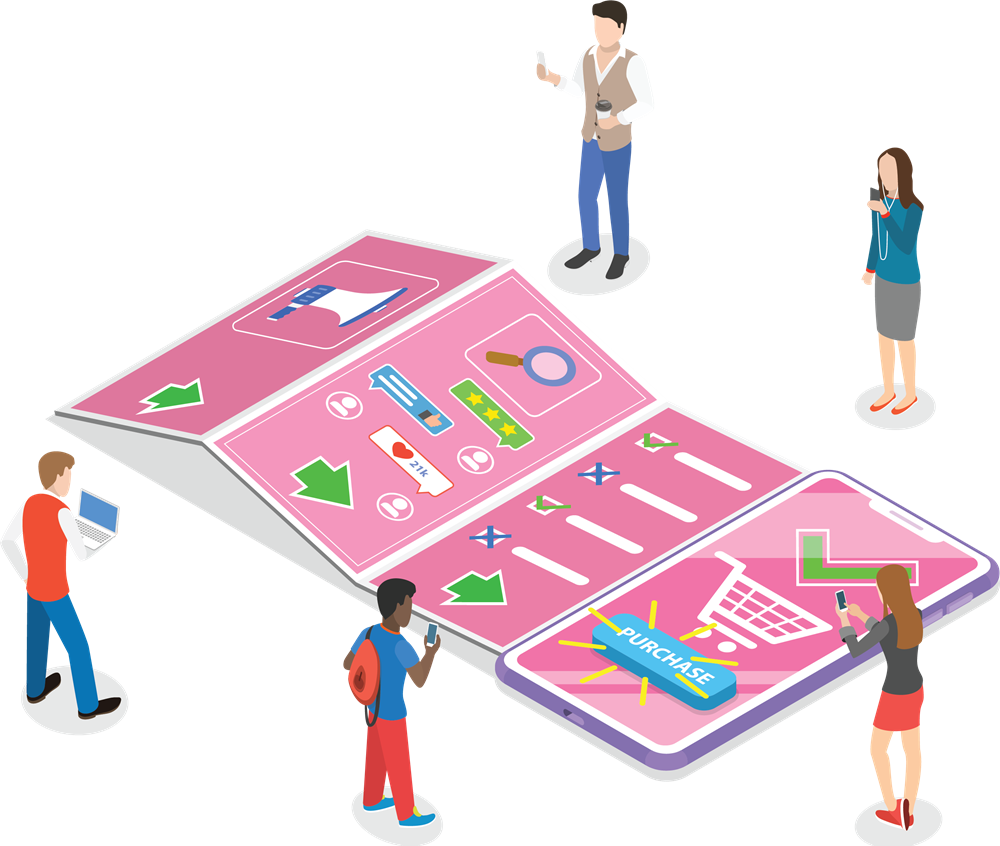
Imagine walking into a store plastered with signs in a language you don’t understand. Not exactly welcoming, right? That’s the importance of localization marketing in a nutshell. It’s about ensuring your brand speaks the language and reflects the culture of your target audience, wherever they may be.
Localization marketing builds trust and credibility. When customers see marketing materials in their language, they trust and connect with your brand. It also boosts engagement. Localized marketing campaigns are more likely to grab attention and resonate with your target audience, leading to higher engagement. Finally, tailoring marketing to audience preferences and needs can increase conversions and sales.
Understanding the Core Principles of Localization Marketing
While translation is a crucial part of localization, it’s just one piece of the puzzle. Translation focuses on converting the words in your marketing materials from one language to another. Localization, however, goes much deeper. It’s about adapting your entire marketing message to resonate with a specific culture.
Cultural Adaptation: The Heart of Localization Marketing
Successful localization marketing is based on understanding and adapting to the cultural nuances of your target market. This includes factors like:
- Humor: What makes your target audience laugh? Jokes that land perfectly in one culture might flop entirely in another.
- Imagery: Colors, symbols, and even body language can have different meanings across cultures. Consider these variations when selecting visuals for your marketing materials.
- Values and beliefs: Uncover what matters most to your perfect customer. Craft your message to connect with their deepest desires and goals.
Leveraging Local Influencers and Partnerships
True localization requires a deep understanding of your target audience and their cultural nuances. This is where local influencers and partnerships come in.
Local influencers are trusted voices within their communities, with a deep understanding of local trends, preferences, and humor. A recommendation from a local influencer carries more weight than a generic ad campaign. Besides, influencers tend to have highly engaged audiences within a specific region or demographic. Finally, local influencers can create content that resonates with the cultural context and language of their audience.
In addition to collaboration with influencers, building partnerships with local businesses further strengthens your localization strategy. Local businesses can provide valuable insights into consumer behavior and cultural sensitivities. Moreover, partnership with local retailers, restaurants, or event organizers can help you distribute your product or service.
For example, Adidas, the iconic sportswear brand, teamed up with Overkill, a renowned streetwear boutique in Berlin, Germany. This collaboration involved co-branded marketing campaigns and limited-edition sneaker releases. Adidas leveraged Overkill’s insight and fanbase to craft exclusive products that catered to the unique tastes of Berlin’s streetwear enthusiasts.
Source: FasterCapital.com
Utilizing Local Digital Channels and Platforms
Consumers are far more receptive to marketing messages delivered in their native language and tailored to their cultural context. Localized content resonates better, leading to higher click-through rates and conversions. Moreover, speaking the local language shows respect for the culture and builds trust with potential customers. Finally, localized SEO and ASO help your brand rank higher in local search engine and app store results.
Localization Success Stories on Social Media
Social media platforms are a fantastic way to connect with local audiences on a personal level. Here are some examples of how brands have aced localization on different platforms:
- Facebook: McDonald’s uses Facebook to showcase regional menu items and partner with local influencers in various countries.
- Instagram: Coca-Cola leverages user-generated content specific to different regions through hashtag campaigns on Instagram.
- WeChat: Many luxury brands are tailoring their marketing messages and customer service specifically to the WeChat platform in China.
SEO Strategies for Global Domination
Search Engine Optimization (SEO) is crucial for getting your brand discovered online. Here are some key strategies to optimize your SEO for different search engines in global markets:
- Keyword research: Research keywords in the local language to understand what your target audience is searching for.
- Localized content: Create high-quality content that addresses local needs and incorporates relevant keywords translated for the specific market.
- App Store Optimization (ASO): Enhance your app’s local store presence with translated titles, descriptions, and keywords to boost search visibility.
Continuous Monitoring and Adaptation in Localization Marketing
Conquering new markets with localization is exciting! You’ve translated your website and app, adapted your messaging and launched your campaign. But hold on –the work isn’t over. Continuous monitoring and adaptation are the secret weapons of successful localization strategies.
Ongoing monitoring and testing are crucial because the markets are ever-evolving. Trends, preferences, and even language itself can shift over time. What resonated with audiences last year might not work today. Additionally, data provides invaluable insights. Metrics like website traffic, conversion rates, and social media engagement reveal what’s landing with your target audience.
Now, how do you use this data to adapt your campaigns? Here are some actionable tips:
- A/B test different messaging and creatives: Don’t be afraid to experiment! Test variations of your ad copy, website layouts, or even color schemes to see what resonates best.
- Stay culturally attuned: Monitor cultural shifts and adjust your messaging accordingly. A humorous ad in one market might be offensive in another.
- Respond to customer feedback: Address any concerns raised through feedback channels and adapt your approach to better serve your audience.
Automation and Translation Management System in Localization Marketing
Localization may involve lots of manual work: copying content, sending it to translators, managing revisions, and integrating translated materials. Automation eliminates these repetitive tasks, freeing up your time and resources. A translation management system (TMS) acts as your central localization hub. Think of it as your mission control, overseeing the entire translation journey. Here’s how a TMS empowers your localization efforts:
- Improved efficiency: TMS software automates tasks, manages workflows, and tracks progress. You get real-time updates and can easily collaborate with translators.
- Cost savings: Automation reduces manual work, which results in cost savings.
- Quality control: Maintain brand consistency with built-in glossaries and style guides accessible to translators. TMS can also integrate with machine translation for pre-translation, further ensuring accuracy.
- Faster time to market: The streamlined process delivers your localized marketing materials faster and helps you reach new audiences.
Mastering localization marketing is essential for global success. By tailoring your message to resonate with the cultural nuances of your target audience, you can build trust, boost engagement, and increase sales.

